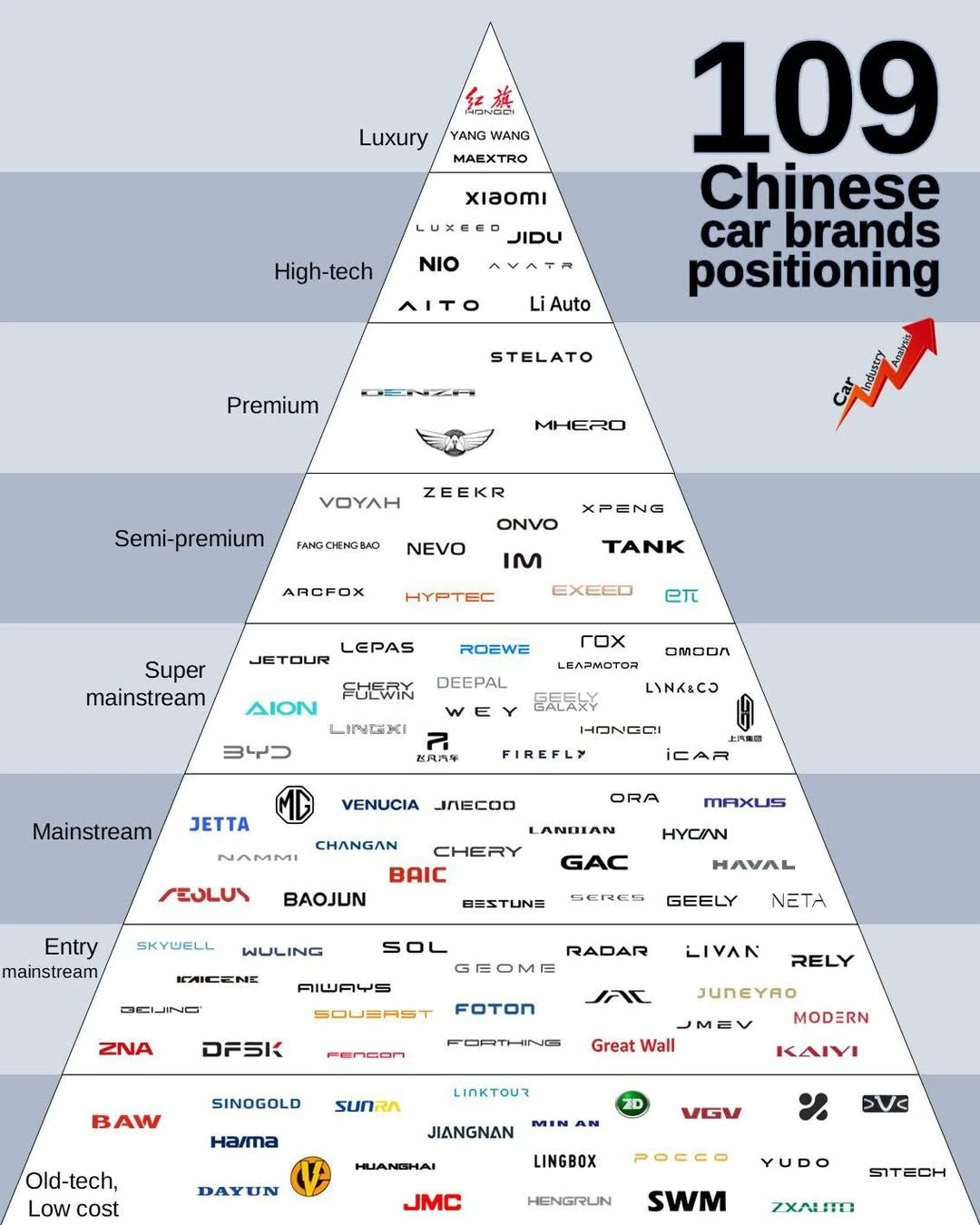
A Crowded Market with Global Reach
China’s automotive landscape is massive, with over 100 active brands vying across every segment, from budget compacts to luxury electric vehicles (EVs). A chart mapping this market reveals its scale and fragmentation. A few players, like BYD, have already disrupted Europe with aggressive pricing and cutting-edge tech, riding a wave where cost and innovation temporarily trump brand heritage and service networks. For American companies, this surge signals both a competitive threat and a chance to tap into a dynamic global market.
The Short-Term Surge of Chinese EVs
Chinese brands have made headlines in Europe, offering EVs like BYD’s Dolphin or MG4 at low prices with modern software and sleek designs, appealing to cost-conscious buyers. Their success hinges on segments where pricing and fresh features outshine established brands’ legacy and infrastructure. But is this sustainable? American giants like Tesla, GM, and Ford are pouring billions into EVs, rapidly closing gaps in battery range, software, and production. Their advancements are gaining traction, bolstered by strong brand loyalty and robust dealer networks.
Trade Barriers and Market Shifts
Trade policies add uncertainty. Tariffs can change overnight, reshaping competition. If the EU hikes duties on Chinese EVs, doubling their prices, their appeal could fade. In contrast, Chinese consumers still snap up American brands like Tesla or Cadillac, even at premium prices, drawn by their prestige and quality. Would American buyers pay double for a Chinese EV? Likely not—brand trust and service infrastructure still weigh heavily in the US market.
Opportunities for American Firms
The Chinese EV boom challenges American manufacturers but also opens doors. China’s market, fueled by government incentives and a growing middle class, is a goldmine for suppliers in battery tech, sensors, or software. A Michigan-based auto supplier, for instance, boosted its Asia revenue by 15% through a partnership with a Chinese EV maker. American companies can start small—deploying a compact team to Shanghai or Shenzhen to study trends and forge connections, laying the groundwork for joint ventures or supply deals.
Strategic Expansion as a Response
Rather than fearing Chinese competition, American firms should leverage it. Expanding into markets like China, the US, or Brazil can unlock new revenue streams. In China, partnerships with local EV makers offer scale; in the US, programs like the Inflation Reduction Act fuel green tech growth; and in Brazil, demand for EVs is rising fast. A targeted entry—starting with local consultants or pilot projects—can minimize risks while positioning firms for global success.
Conclusion: Act with Foresight
China’s EV surge is a signal, not a setback. American companies should lean on their strengths—innovation, brand trust, and quality—while seizing global opportunities. By exploring partnerships and expanding strategically into markets like China, the US, or Brazil, they can stay ahead in the EV race. The key is balance: protect the home market, but invest wisely where tomorrow’s growth is taking shape.
Talk to us, we’ll help you succeed in China.